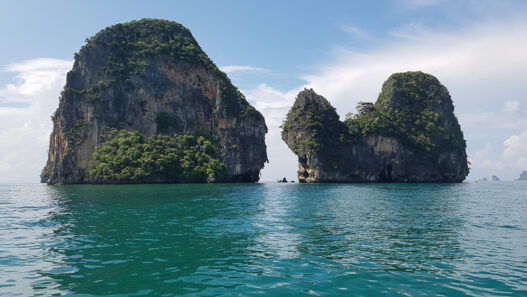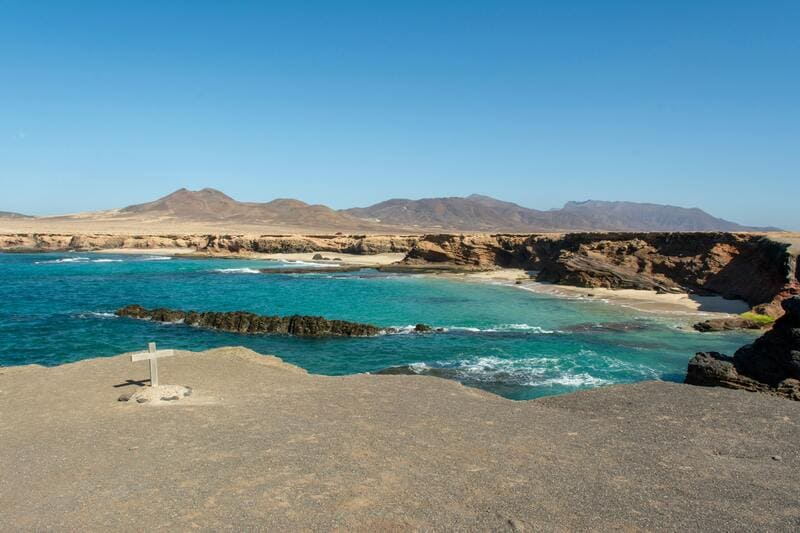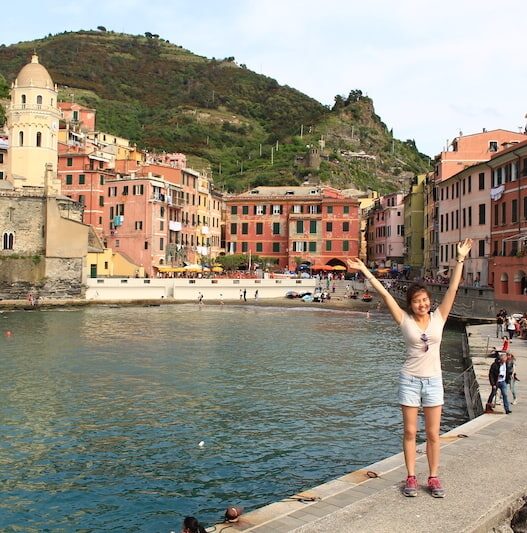Here's the thing about the Canary Islands – once you've been, every other beach trip feels a little dull.
I realised that halfway through my first morning in Tenerife, sipping coffee with a view of Mount Teide glowing pink in the sunrise, my phone already connected thanks to an international eSIM I'd set up before landing. No fumbling for local SIM cards, no searching for Wi-Fi – just me, my coffee, and that surreal view.
With their dramatic lunar landscapes, palm-lined beaches, and endless sunshine, the Canaries are one of those destinations that surprise you with how much they offer. The culture is distinctly Spanish, the seafood couldn't be fresher, and the islands have all the modern comforts that make travelling easy — ideal whether you're chasing adventure or a slow, relaxing holiday.
But it begs the question: which island should you pick?
5 Best Canary Islands You Can't Miss
Tenerife – The Island That Has It All
If there's 1 Canary Island that captures the spirit of both Spain and Italy in a single trip, it's Tenerife. On my first visit, I woke up early to watch the sunrise from Spain's highest peak — Mount Teide — and later found myself in a seaside café that felt straight out of southern Italy, sipping espresso by the water. By afternoon, I was swimming off a golden beach, and somehow still had the energy to dance until 2 a.m. in Costa Adeje, where the nightlife rivals Barcelona's.
That's Tenerife in a nutshell — adventurous by day, electric by night, yet calm enough that you can always find a quiet corner to slow down. It's like exploring Spain's fiery soul and Italy's coastal charm without ever leaving one island.
Mount Teide And Tenerife's Wild Side
Tenerife's heart — and its skyline — is dominated by Mount Teide, a 3,718-metre giant that's impossible to miss. It's Spain's highest peak and a UNESCO World Heritage Site, but beyond its stats, there's something truly humbling about standing on its slopes, feeling like you're on another planet.
The indigenous Guanches once called it Echeyde, meaning “hell,” a nod to the fiery eruptions that shaped the island millions of years ago. Today, you can reach the top by cable car rather than climbing through lava fields — a much more comfortable experience, though the thin air at the summit still takes your breath away (literally and figuratively).
When you've had enough of volcanic views, drive north to Anaga Rural Park, where the scenery transforms completely. Think misty laurel forests, rugged coastlines, and secret beaches like Playa de Benijo that feel a world away from the tourist south. The contrast is staggering — in under an hour, you can go from desert-like rock formations to dense, green jungle.
Beaches, Culture, and Island Energy
Tenerife boasts over 43 miles of coastline, with beaches to match every mood. Down south, Playa de las Américas and Los Cristianos buzz with nightlife, water sports, and ocean-view restaurants — perfect if you love being in the thick of the action. Up north, though, you'll find a quieter, more authentic rhythm. Surfers gather at Benijo Beach, families picnic along the black sands of El Bollullo, and the sunsets are spectacular enough to make you forget about your phone (well, almost).
Beyond the beaches, La Orotava and San Cristóbal de La Laguna add a cultural depth that surprises many visitors. La Orotava's cobbled streets and colourful colonial houses feel frozen in time, while La Laguna – also a UNESCO World Heritage site — pulses with students, tapas bars, and live music.
According to Hello Canary Islands, the archipelago's official tourism portal, visitors are first drawn in by the year-round mild climate. But once you arrive, it's the cosmopolitan capitals, volcanic trails, and world-class beaches that make you want to stay longer. Regardless of your choice, HolidayRentals365 can offer a variety of great accommodation options for any budget!
For families, Siam Park is unmissable. It's not just another waterpark — it's consistently ranked among the best in the world, and after spending a day there, it's easy to see why. Between the adrenaline rides, lazy rivers, and wave pools, it's a guaranteed crowd-pleaser.
Gran Canaria – The Island Of Landscapes
Often called a “miniature continent,” Gran Canaria has a dramatic nickname that reflects a climatic diversity that seems almost impossible for an island of just 50 kilometers across. You can genuinely experience multiple seasons in a single day here: starting with coffee in the subtropical capital, drive through alpine-like mountains for lunch, and end with sunset drinks on a Sahara-esque beach.
Urban Soul, Natural Drama
Las Palmas de Gran Canaria, the island's capital, is where city life meets island rhythm. It's not flashy or filled with skyscrapers — instead, it's a perfect blend of history, culture, and creativity.
I loved wandering through Vegueta, the old quarter, where pastel-coloured colonial houses line cobbled streets and echoes of Spain's early explorers still linger. Then, just a few blocks away, you're in Triana, a lively shopping and café district that wouldn't feel out of place in Madrid.
If you're into arts and performance, the Pérez Galdós Theatre is a gem — think Italian-inspired interiors and an impressive cultural calendar that brings world-class shows to the island all year round. I caught a local jazz performance there on my first visit and still remember how intimate the whole evening felt — less like a grand concert, more like being part of something local and special.
But Gran Canaria's real magic begins the moment you leave the city. Head inland, and the energy slows right down. Mountain villages like Tejeda and Artenara sit high above deep ravines, surrounded by almond trees and endless hiking trails. Life here feels beautifully simple — the kind where shopkeepers still greet you by name, and locals invite you to try their homemade cheese or gofio.
And then, of course, there's the sun. Thanks to its eastern position, Gran Canaria tends to stay warmer than its western neighbours, making it a dream for winter travellers chasing a bit of vitamin D. I spent Christmas here once — shorts, sunshine, and all — and couldn't have been happier.
Where To Stay: From Dunes To Hillsides
Gran Canaria's diversity means where you stay shapes your whole experience. The south — particularly Maspalomas and Playa del Inglés — is where golden sands meet lively nightlife. The Maspalomas Dunes at sunset are simply breathtaking, especially if you wander far enough to find a quiet spot away from the crowds.
Up north, the landscape transforms again — think lush greenery, sea cliffs, and sleepy coastal towns where time feels irrelevant. It's perfect for slow mornings, scenic drives, and long lunches by the water.
If you're looking for the ultimate Gran Canaria stay, Top Salobre Villas by VillaGranCanaria ticks every box. Set within a peaceful resort complex next to a golf course, these stylish villas come with 2 or 3 bedrooms and views of the mountains and garden – and honestly, having my own pool and sunrise view made it feel like I'd found my little corner of paradise.
Lanzarote – The Volcanic Dreamscape
The first time I set foot on Lanzarote, I honestly thought I'd landed on another planet. The island's volcanic landscapes stretch out like something straight out of a sci-fi film — and in fact, they often are. Its raw, untouched beauty has doubled for Mars in Hollywood productions, but standing there in person, you realise no camera could ever truly capture it.
Located on the eastern edge of the Canary Islands, Lanzarote feels wilder, more elemental, and somehow more artistic than its neighbours. This isn't your typical beach destination — though it has plenty of those too — it's a place where nature and creativity collide in the most fascinating way.
A Landscape Sculpted By Fire
Timanfaya National Park is Lanzarote's main attraction. It gets over one million visitors each year to witness what volcanic forces can create. This is the second most visited national park in the Canaries after Tenerife's Teide, and for good reason. The landscape feels genuinely Martian, with twisted lava formations and dormant craters. The famous restaurant demonstration where staff cook food using geothermal heat never fails to amaze visitors.
Black sand beaches are all around the coast too, which contrasts nicely with the white-painted buildings that Manrique insisted should define Lanzarote's architecture. The wine region near La Geria has vines growing in individual pits carved into black volcanic ash. That's something you won't find elsewhere.
Fuerteventura – The Beach Lover's Haven
The second-largest island is Fuerteventura. It lies closest to the African mainland, and this proximity tells you everything you need to know about the island's character.
Where other Canary Islands balance beaches with mountains or urban centers, Fuerteventura commits wholeheartedly to a single vision: endless stretches of pristine sand with crystal-clear waters under reliably brilliant sunshine. This is the Canaries at their most relaxed – it's not too touristy, and the tourists it does get are very nature or sport focused.
Europe's Beach Destinations
Fuerteventura's beaches have earned genuine international acclaim. It's among Europe's finest (if you can even class them as European). The island actually has over 150 beaches, so it's worth just heading to some at random, as you can keep hopping along until you find one that speaks to you. This the island to go to if you want white sands, not black volcanic beaches found on other islands, making it more Caribbean-like.
This is the windy island, remember that. This means it's perhaps less good for sunbathing in the winter, but it's better for windsurfing and kitesurfing. The northern and southern beaches both attract water sports enthusiasts from around the world – it's Europe's answer to those Australian beaches that we all know and love. Even if water sports aren't your passion though, the island's reliable warmth and minimal rainfall makes it a good choice.
Desert And Relaxed Living
Away from the coast a little and you'll find some Sahara-like landscapes. It's not the only island with dunes and sparse vegetation, but it's perhaps the most desert-like (again, because of having less black sand).
Traditional villages have their own authentic Canarian culture, and the island remains noticeably less developed and more budget-friendly than Tenerife or Gran Canaria. Remember, ferry connections make Lanzarote just thirty minutes away, so why not just see both?
La Palma – The “Beautiful Island”
La Palma is nicknamed “La Isla Bonita” through sheer natural splendor that sets it apart from every other island in the archipelago. It's the least well known of these, by far, perhaps because of its own volcanic character that is less developed than others. But it's still got plenty of local developments, with the locals cherishing the uncommercial settings. Designated as a UNESCO Biosphere Reserve, this is the Canaries for nature lovers and hikers who want to “get away from it all”.
For Nature Enthusiasts
The contrast with desert-like Fuerteventura couldn't be more pronounced here. La Palma's endemic Canary pine forests cover the mountainous interior, meaning there are hiking opportunities that are more similar to central Europe.
The extensive trail network winds through ancient woodlands, even past waterfalls, and all along ridges offering vertiginous views of the Atlantic far, far below. The island's volcanic heritage is visible, sure, but it's different here. It had a recent eruption in 2021, serving as a powerful reminder that these islands remain geologically active. Scary, but exciting.
Black sand beaches exist again, unsurprisingly, despite the greenery. La Palma attracts visitors more interested in what lies above than what's at sea level. The Roque de los Muchachos observatory, positioned at the island's highest point, has some of the world's most sophisticated telescopes. The exceptionally clear, dark skies have made La Palma a world class place for stargazing, with astronomical tourism growing steadily.
Authentic Escapes And Starlit Nights
La Palma is where you go when you want the Canaries all to yourself. The island still hums with real local life — you'll see farmers tending banana plantations, families chatting outside tiny bars in Santa Cruz de La Palma, and a pace that feels untouched by mass tourism.
Getting here usually means a connecting flight, but that extra effort is part of the magic. Once you arrive, the crowds thin, the air feels clearer, and at night, the skies explode with stars — La Palma is, after all, one of the world's top stargazing destinations. It's an island that rewards those who crave something authentic, slow, and quietly spectacular.
Each Canary Island has its own rhythm – from Tenerife's lively beaches to La Palma's quiet, starry skies – and that's exactly what makes choosing one so exciting. The islands may share volcanic roots, but their landscapes, cultures, and vibes are completely unique.
Whether you're planning a road trip through the Canaries, packing for an island-hopping adventure, or simply dreaming of your next sunny escape, there's an island that fits your travel style perfectly.


















